It’s finally heeeere!! Painting the shower was one of two projects that inspired me to want to do this bathroom makeover in the first place. If I could have, I would have done it very first but then I wasn’t so sure I’d want to finish the bathroom after that. 🙂 So I used it as my motivation to finish the other less exciting projects first like installing the beadboard, building the open shelving, and updating the medicine cabinet and it totally worked! The other project (which you’ll get a sneek peak of in some of these photos) is stenciling the bathroom floor! That post will be coming up next.
Here are the materials used:
- Caulk remover (I used this one)
- Krud Kutter or any heavy duty cleaner
- Lime-A-Way
- Scouring pads
- 400 grit wet/dry sandpaper
- Rustoleum Tub and Tile Refinishing Kit x2
- Several 4″ or 6″ foam rollers (I used ones similar to these)
- Roller handle
- Paint brush
So let me show you what I was working with.
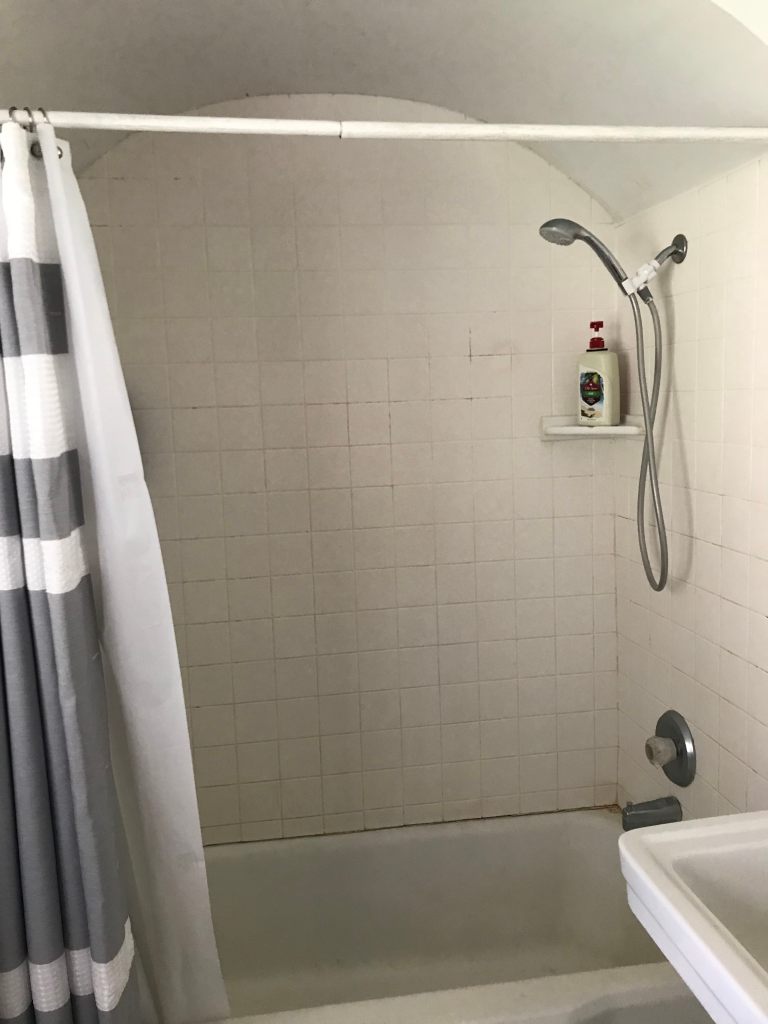
This shower needed some serious help. Like, seriously. The caulk was missing in some parts, there was grout in places where there should have been caulk, and the whole thing was covered in mildew and hard water deposits.
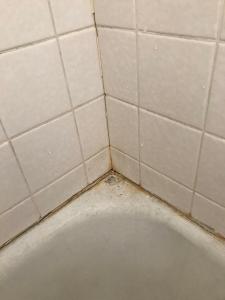
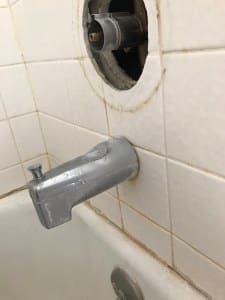

THE PROCESS
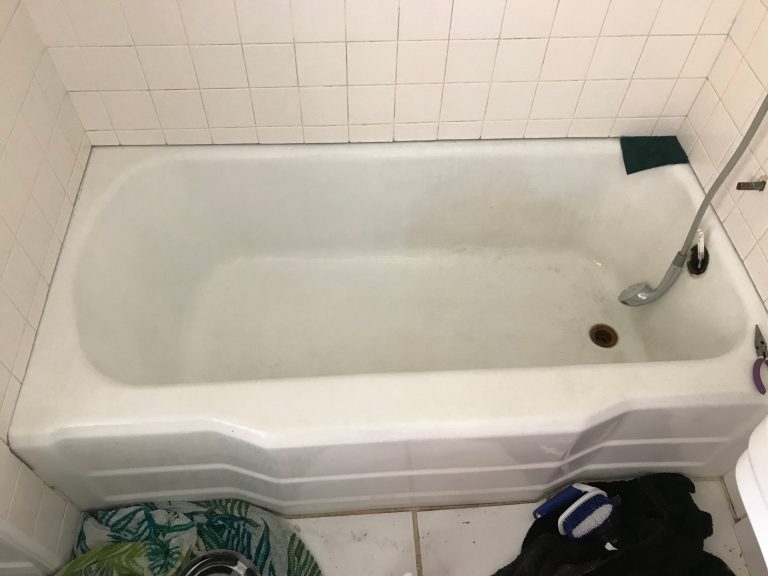
The first step was to remove all the caulk. I used this caulk remover and it seemed to do the job just fine, although I haven’t used any other kind to know what to compare it to. It came in a squirt bottle, but I think I would have preferred one that sprayed just for ease of use. I squirt some onto the caulk and let it sit for a few minutes before taking a razor blade to it and scraping it all off. If you’re dealing with a shower that is missing grout, this would be a good point to fix that.
Once the caulk was all taken off I removed all the shower hardware (including the drain) and scrubbed the shower down. And I mean SCRUBBED. I first used some Lime-A-Way cleaner and a scouring pad to get into all the grout lines and to take what hard water stains off the tile I could. Afterward I used Krud Kutter and scrubbed the shower down again, but you could use any heavy duty cleaner. I used the Lime-A-Way again after that with the scouring pad just for good measure. You want the shower to be SQUEAKY clean, otherwise you risk the paint not adhering properly and peeling up.
I made sure to especially scrub the floor of the tub, since that’s where it would be getting the most wear and risk peeling up even more. I read from other people who had done this that the drain area started to give them problems after a while, so I made sure I scrubbed that really well also.
Once I had the shower cleaner than it had been since it was new, I went over the whole thing with 400 grit wet/dry sandpaper to rough up the tile and the porcelain and create microscopic scratches to help with better paint adhesion. Again, I paid special attention to the drain area and floor of the tub. After rinsing off any dust from that, I was finally ready to start painting.
With this size of shower, I found that one box was enough for one coat. That could possibly have been because the foam rollers were absorbing a lot of the paint and I had to change them out frequently because they started to break apart and leave bits of foam in my paint. I applied the paint first with a paint brush, and then went over what I had applied with the rollers to smooth it out. This is what it looked like after the first coat.
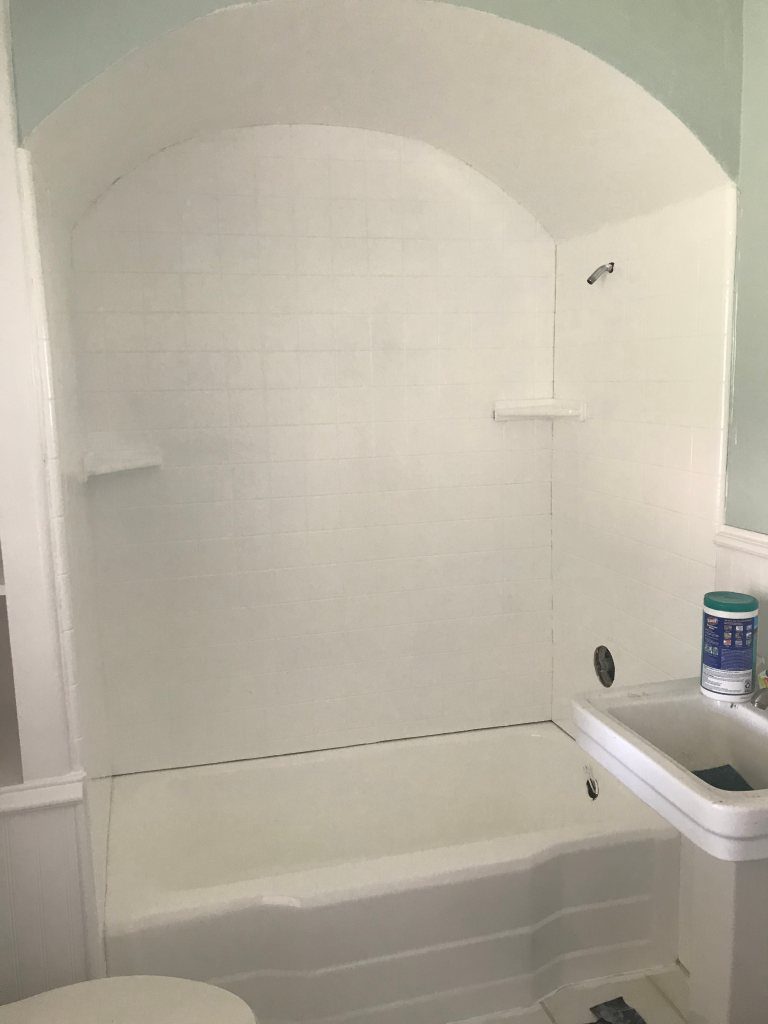
I let the first coat dry overnight, but only because I had somewhere to be. The instructions say you only need to leave an hour in between coats. This is what it looked like after I put on the second coat.
This coat I let dry for 3 days. It dries to the touch much sooner than that, but the instructions on the box say to not expose it to water until after giving it 3 days to cure. Once it was cured, I caulked all the seams back up and reinstalled the shower hardware.
AFTER
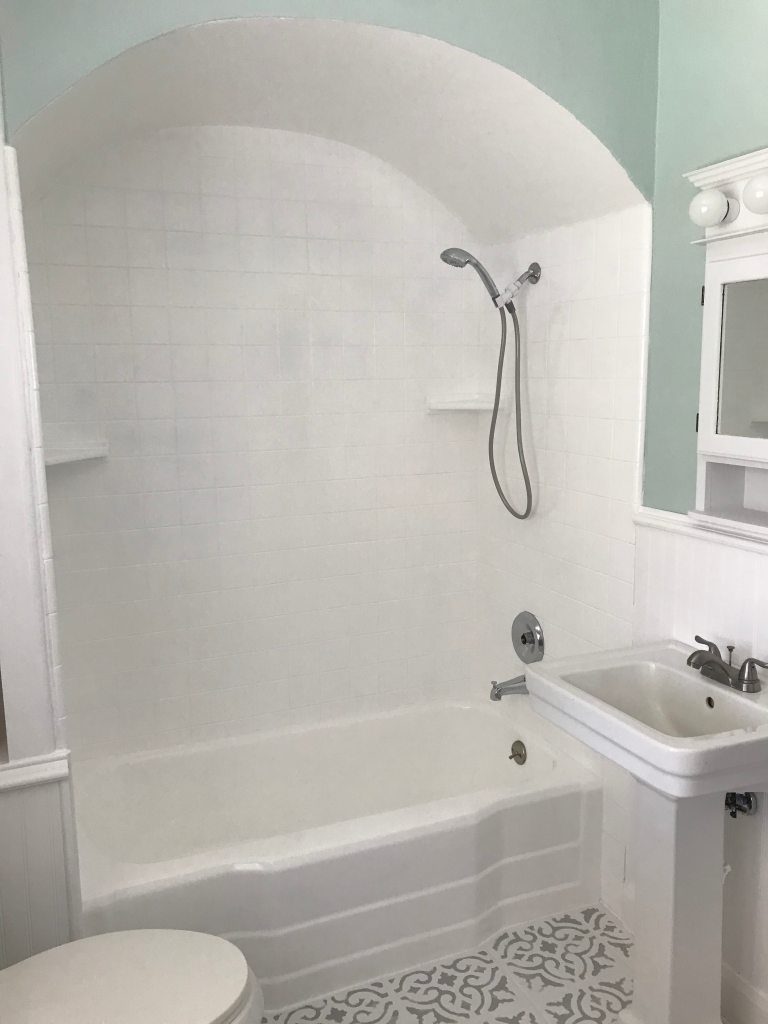
It was beautiful! The finish of the paint is very similar to what a brand new porcelain tub looks and feels like. It is hard and shiny and oh so white! One of my friends came in and was shocked when I told them the shower was painted. It looked brand new!
I am really really happy with these results. I’ll let you know how the shower holds up over time! Thanks for tuning in and let me know in the comments if you have any questions!
XOXO,
Crystel


